interior designing of living room: A Comprehensive Guide
In the realm of home decor, the living room stands as a testament to personal style, comfort, and functionality. As the heart of any home, it’s where families gather, friends reconnect, and individuals unwind after a long day. The art of interior designing of living room has evolved significantly over the years, blending aesthetics with practicality to create spaces that are both visually appealing and highly functional. This comprehensive guide will delve into the intricacies of living room design, offering insights, ideas, and expert advice to help you transform your space into a haven of style and comfort.
Understanding the Fundamentals of Living Room Interior Design
Before diving into specific ideas and trends, it’s crucial to grasp the fundamental principles that govern effective interior designing of living room. These principles form the backbone of any successful design project, ensuring that the end result is not only beautiful but also practical and tailored to the homeowner’s needs.
Space Planning: The Foundation of Interior Design for Living Rooms
At the core of any interior design project lies the art of space planning. This involves carefully considering the room’s dimensions, architectural features, and intended use to create a layout that maximizes both functionality and aesthetic appeal. When it comes to interior designing of living room, space planning takes on even greater importance due to the multifunctional nature of these spaces.
Key considerations in space planning include:
- Traffic Flow: Ensure there’s a clear path for movement throughout the room.
- Focal Points: Identify and enhance natural focal points, such as fireplaces or large windows.
- Furniture Arrangement: Create conversation areas and define zones for different activities.
- Scale and Proportion: Choose furniture and design items that fit well within the space.
By mastering the art of space planning, you lay the groundwork for a living room that not only looks good but also feels right.
Color Theory in Living Room Interior Design
Color plays a pivotal role in setting the mood and atmosphere of a living room. Understanding color theory can help you create harmonious and visually appealing color schemes that enhance the overall design. When considering interior designing of living room, keep these color principles in mind:
- Fiery hues infuse spaces with warmth, fostering an embracing ambiance.
- Cool colors (blues, greens, purples) promote relaxation and tranquility.
- Neutral colors provide a versatile backdrop for accent pieces and changing decor.
- Complementary colors (opposite on the color wheel) create dynamic contrast.
- Analogous colors (adjacent on the color wheel) offer a harmonious, cohesive look.
Remember, the colors you choose for your living room should reflect your personal style while also considering the room’s natural light and intended ambiance.
Lighting: Illuminating Your Living Room Design
Proper lighting is essential in interior designing of living room, as it affects both the functionality and atmosphere of the space. A well-designed lighting scheme incorporates three main types of lighting:
- Ambient Lighting: General illumination for the entire room (e.g., ceiling fixtures, recessed lighting).
- Task Lighting: Focused light for specific activities (e.g., reading lamps, under-cabinet lights).
- Accent Lighting: Highlights specific features or objects (e.g., picture lights, wall sconces).
By layering these different types of lighting, you can create a versatile and inviting living room that adapts to various moods and activities throughout the day.
Interior Design for Living Room Ideas: Styles and Trends
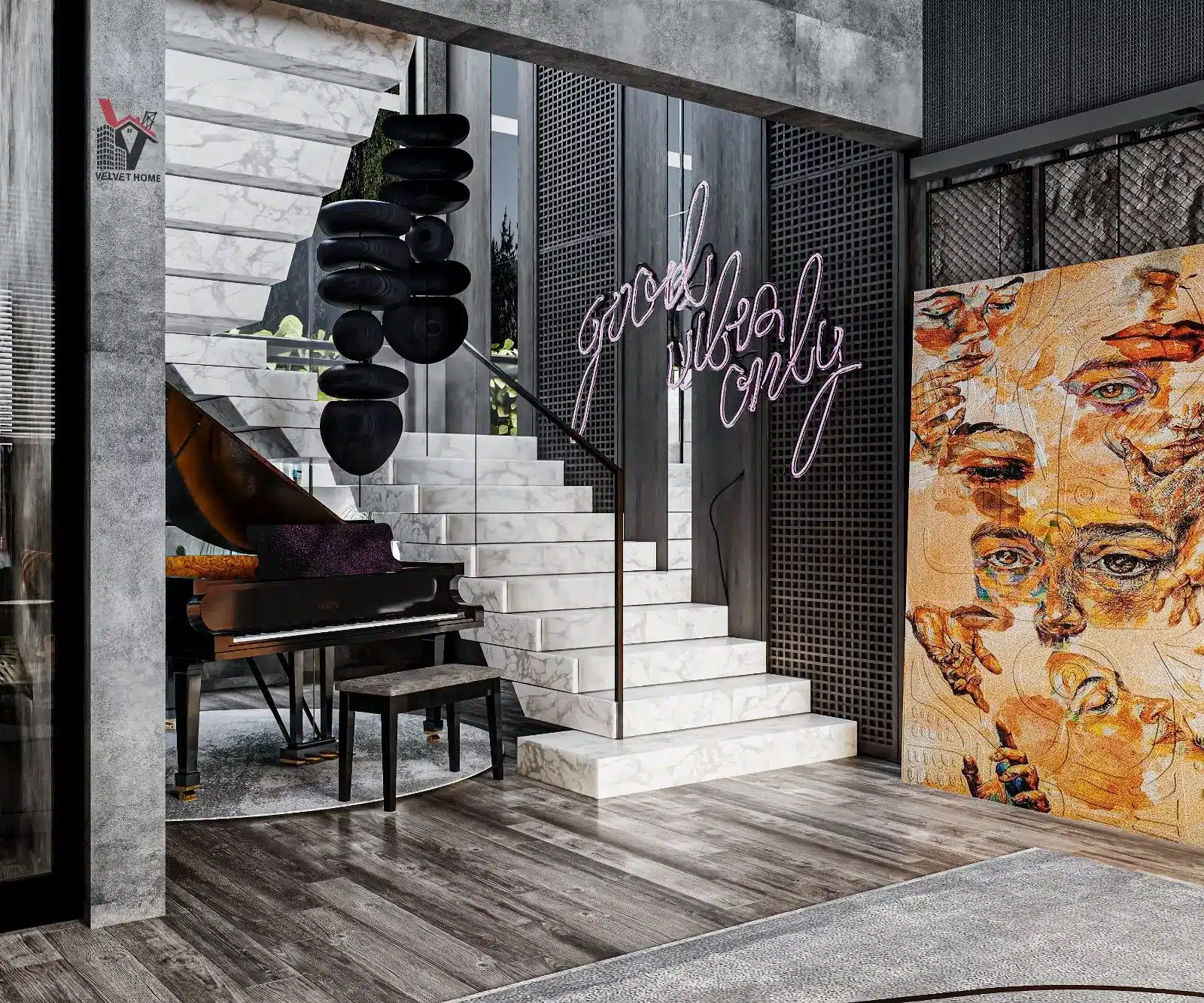
Now that we’ve covered the basics, let’s explore some popular styles and trends in interior designing of living room. These ideas can serve as inspiration for your own design projects or help you identify elements that resonate with your personal taste.
Modern Interior Design Living Room Concepts
Sleek simplicity and purpose-driven aesthetics define contemporary living areas. Key elements of modern interior design for living rooms include:
- Neutral color palettes with pops of bold color
- Sleek, low-profile furniture
- Geometric patterns and shapes
- Large windows for ample natural light
- Integration of technology (e.g., smart home systems)
To achieve a modern look in your living room, consider incorporating materials like glass, metal, and polished wood. Opt for furniture with simple living room interior design, streamlined silhouettes and avoid excessive ornamentation.
Scandinavian-Inspired living rooms design
Scandinavian design has gained immense popularity in recent years, thanks to its emphasis on simplicity, functionality, and connection to nature. Key features of Scandinavian-inspired living rooms include:
- Light, airy color schemes (predominantly white with touches of gray and black)
- Natural materials like wood, leather, and wool
- Cozy textiles (e.g., chunky knit blankets, sheepskin rugs)
- Minimalist furniture with clean lines
- Incorporation of plants and natural elements
To bring Scandinavian style into your living room, focus on creating a bright, uncluttered space that feels warm and inviting despite its minimalist aesthetic.
Eclectic Living Room Interior Design
For those who prefer a more personalized and unique approach to interior designing of living room, eclectic style offers the perfect solution. This design philosophy embraces a mix of styles, periods, and textures to create a one-of-a-kind space. Key elements of eclectic living rooms design include:
- A diverse mix of furniture styles and periods
- Bold color combinations and patterns
- Gallery walls featuring a variety of art pieces
- Layered textures (e.g., velvet, silk, leather, woven fabrics)
- Statement lighting fixtures
When embracing eclectic design, the key is to find a balance between diverse elements while maintaining a cohesive overall look.
Interior Designing Dubai: Luxury and Opulence in Living Rooms
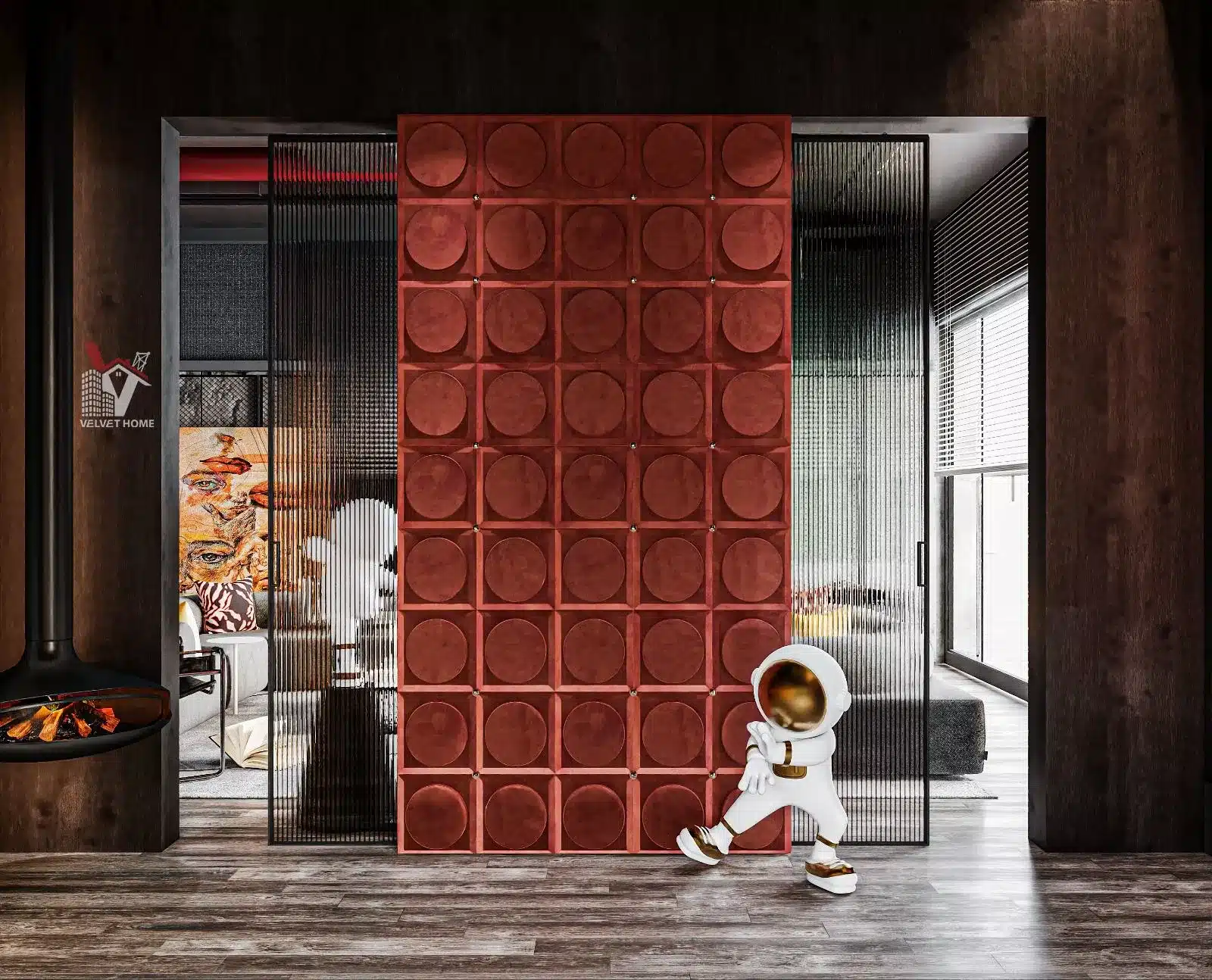
Dubai has become synonymous with luxury and extravagance, and this is reflected in its approach to interior designing of living room. The Dubai style combines traditional Arabic influences with contemporary design elements to create spaces that are both opulent and functional.
Characteristics of Dubai-Inspired living rooms design
When incorporating Dubai-inspired elements into your living rooms design, consider the following:
- Lavish Materials: Use high-end materials like marble, gold accents, and rich fabrics.
- Intricate Patterns: Incorporate traditional Arabic patterns in textiles and architectural details.
- Statement Lighting: Choose grand chandeliers or uniquely designed light fixtures as focal points.
- Plush Seating: Opt for comfortable, oversized sofas and armchairs in luxurious fabrics.
- Ornate Details: Include decorative moldings, carved wood elements, and intricate metalwork.
By blending these elements with contemporary design principles, you can create a living room that exudes luxury and sophistication while remaining functional and comfortable.
Practical Considerations in Interior Design for Living Rooms
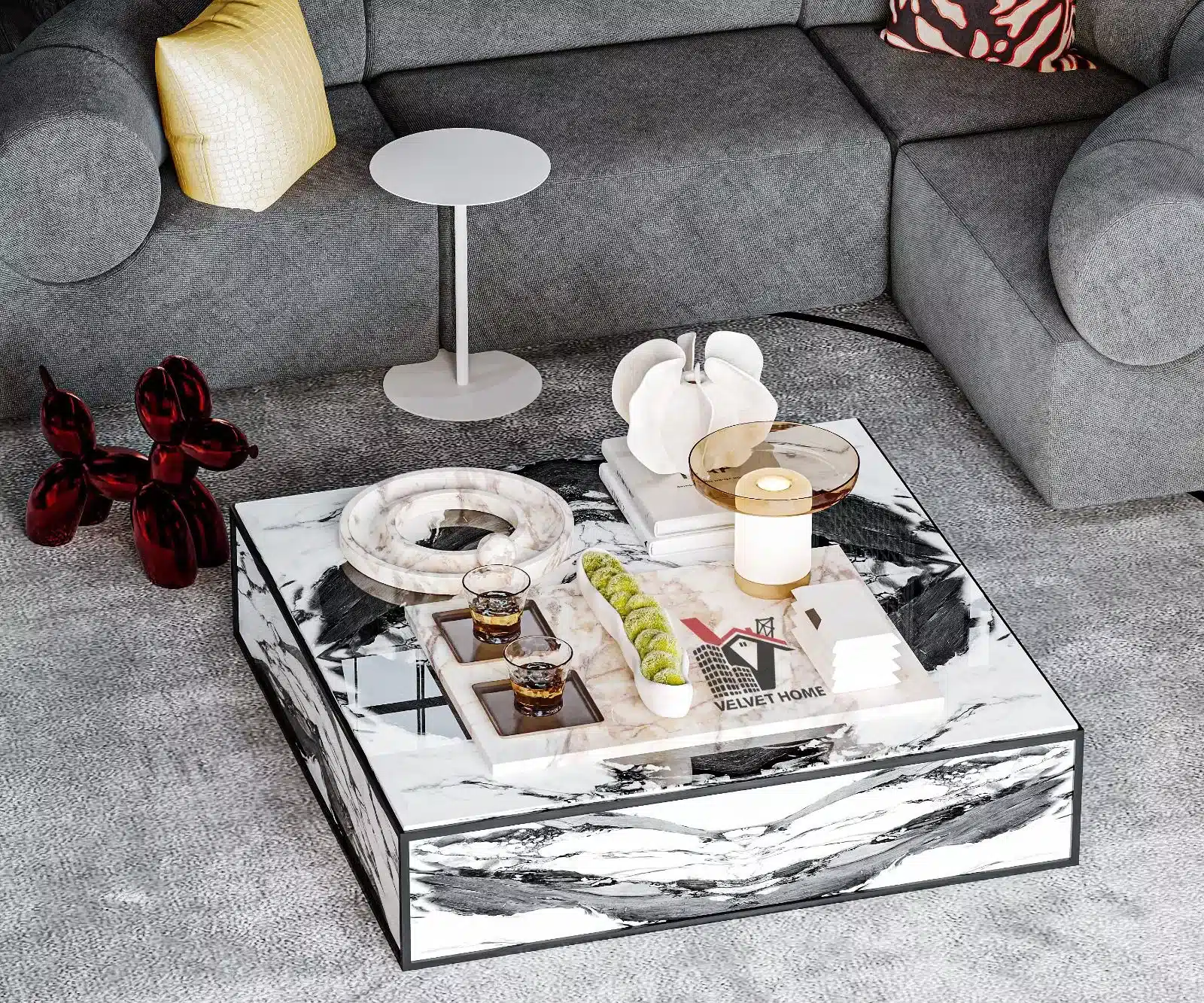
While aesthetics are important, practical considerations should not be overlooked when interior designing of living room. Consider these crucial elements when planning your space:
Furniture Selection and Arrangement
Choosing the right furniture and arranging it effectively is crucial for creating a comfortable and functional living room. Consider the following tips:
- Scale: Ensure furniture pieces are proportionate to the room size.
- Functionality: Choose pieces that serve multiple purposes (e.g., storage ottomans).
- Comfort: Prioritize seating that is both stylish and comfortable for long-term use.
- Flexibility: Opt for modular furniture that can be rearranged easily.
When arranging furniture, create conversation areas that encourage interaction while maintaining clear pathways for easy movement throughout the room.
Storage Solutions in living rooms design
Effective storage is essential for maintaining a clutter-free living room. Incorporate storage solutions that blend seamlessly with your overall design:
- Built-in shelving units
- Multi-functional furniture with hidden storage
- Decorative baskets and boxes for small items
- Wall-mounted cabinets or floating shelves
By integrating smart storage solutions, you can keep your living room organized and visually appealing.
Technology Integration in Modern Living Rooms
As technology continues to play an increasingly important role in our daily lives, it’s crucial to consider how to integrate it into your living rooms design. Some ideas include:
- Concealed charging stations for devices
- Smart home systems for lighting, temperature, and entertainment control
- Hidden or retractable TV mounts
- Wireless speaker systems that blend with the decor
By thoughtfully incorporating technology, you can create a living room that is both modern and functional without compromising on style.
Living Room with Dining Room Design: Open Concept Spaces
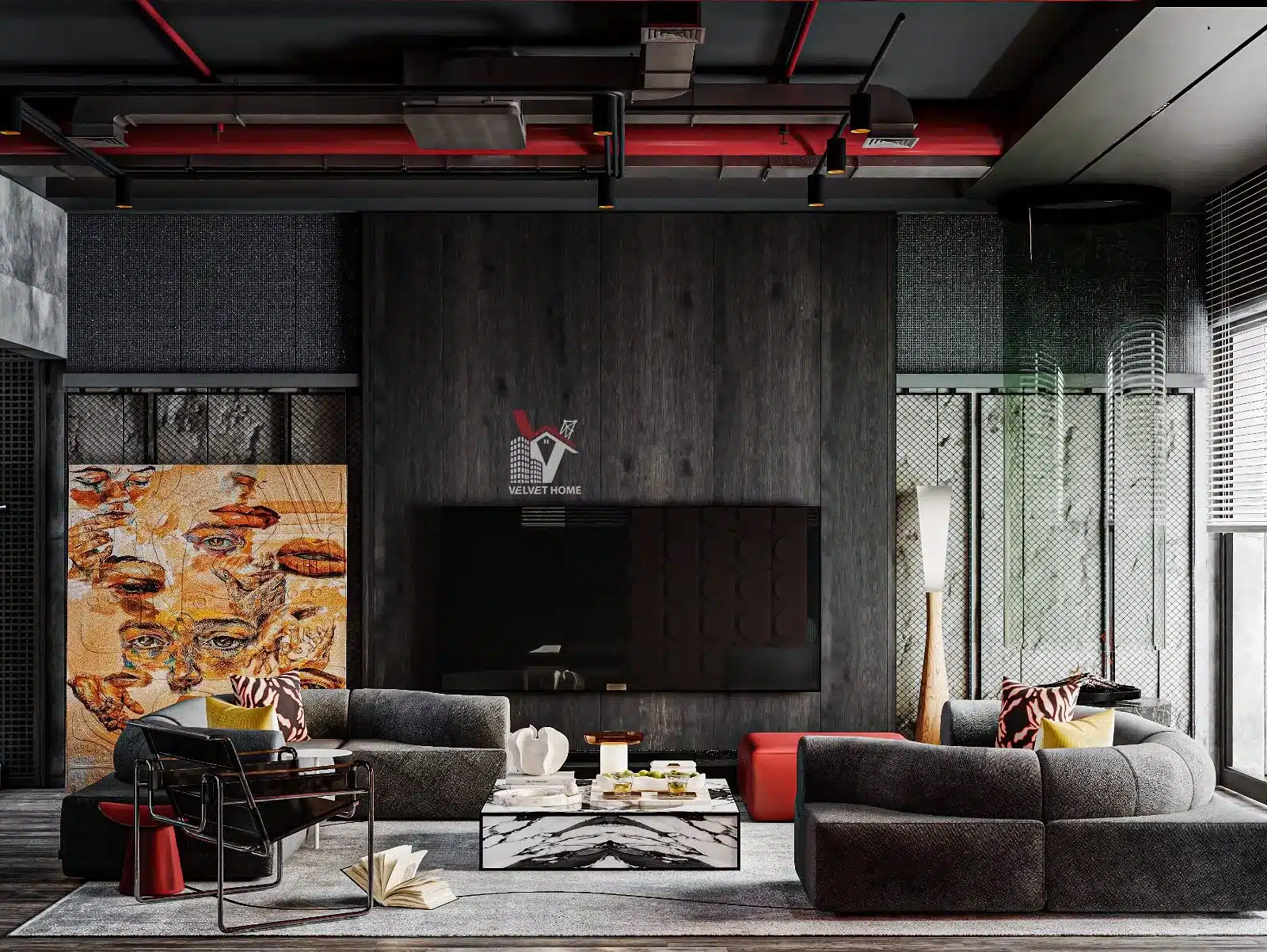
Many contemporary homes feature open-concept layouts that combine living and dining areas. When interior designing of living room with adjoining dining spaces, consider these tips:
- Define Zones: Use area rugs, lighting fixtures, or furniture placement to delineate separate areas within the open space.
- Maintain Cohesion: Ensure a consistent color scheme and style throughout both areas for a harmonious look.
- Balance Scale: Choose furniture that complements both spaces without overwhelming either.
- Optimize Traffic Flow: Arrange furniture to create clear pathways between living and dining areas.
- Flexible Furniture: Incorporate pieces that can serve both living and dining functions when needed.
By carefully considering the relationship between living and dining areas, you can create a cohesive and functional open-concept space that enhances daily life and entertains with ease.
Interior Design of Small Living Rooms: Maximizing Space and Style
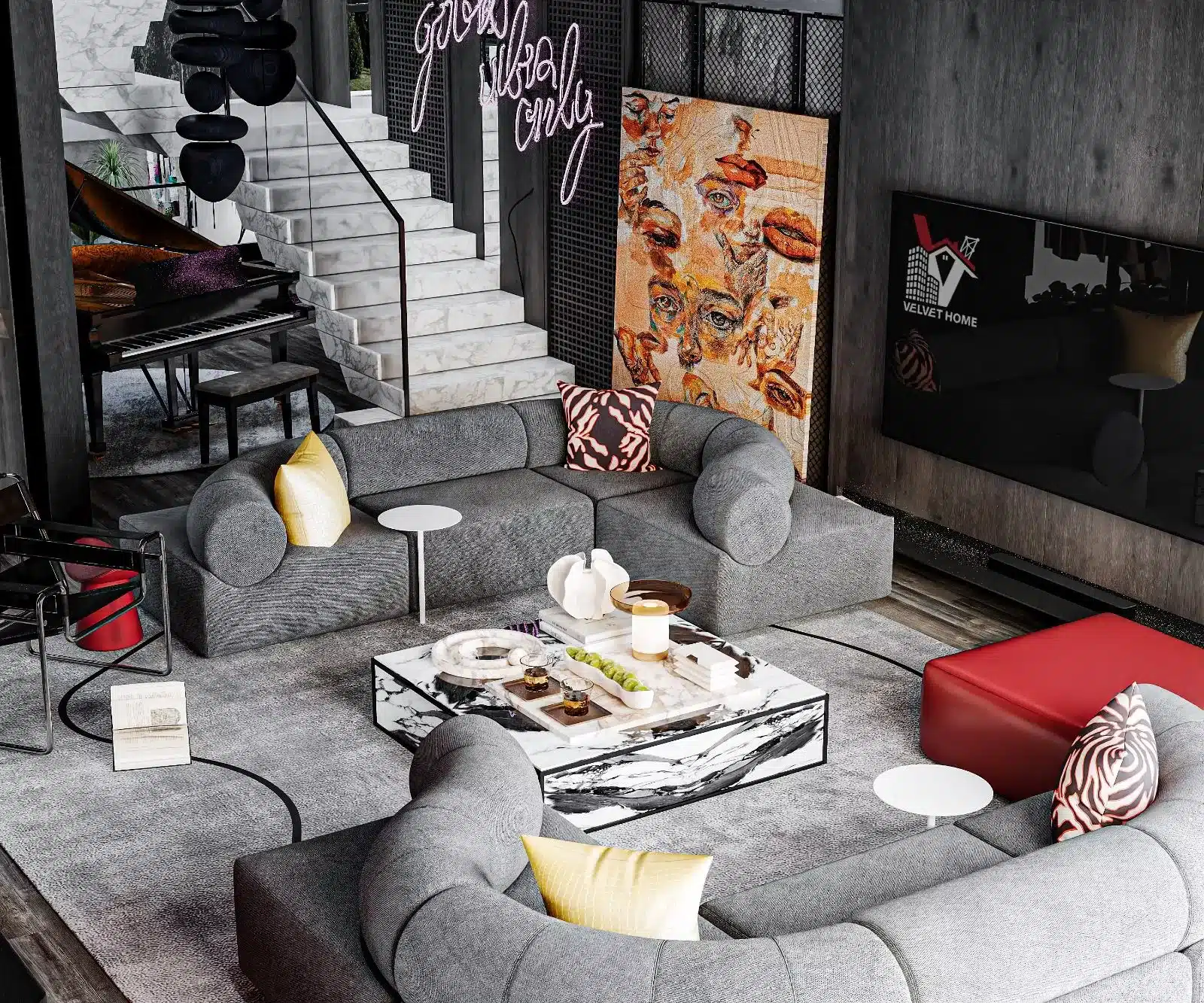
Designing small living rooms presents unique challenges, but with clever planning and strategic design choices, you can create a space that feels both spacious and stylish. Here are some tips for interior designing of small living rooms:
Multi-Functional Furniture for Small Spaces
Invest in furniture that serves multiple purposes to maximize functionality without cluttering the space:
- Sofa beds or daybeds for guest accommodations
- Nesting tables that can be expanded when needed
- Ottoman coffee tables with hidden storage
- Foldaway wall workstations maximize floor area when idle
Optical Illusions to Enhance Space
Use design tricks to make your small living room appear larger:
- Strategic mirror placement amplifies luminosity, creating spatial illusions.
- Light, neutral colors to open up the room
- Vertical stripes or patterns to increase perceived height
- Glass or lucite furniture to reduce visual weight
Smart Storage Solutions for Compact Living Rooms
Maximize every inch of available space with clever storage ideas:
- Floor-to-ceiling bookcases
- Under-sofa storage drawers
- Floating shelves to utilize vertical space
- Dual-purpose furniture with built-in storage compartments
By implementing these strategies, you can create a small living room that feels spacious, functional, and stylish.
The Role of Textiles in Living Room Interior Design
Textiles play a crucial role in interior designing of living room, adding warmth, texture, and personality to the space. Consider the following textile elements:
- Window Treatments: Curtains, drapes, or blinds that complement the overall design while providing privacy and light control.
- Area Rugs: Define spaces, add warmth, and introduce pattern or color to the room.
- Throw Pillows and Blankets: Easy ways to add pops of color, texture, and seasonal variety to your living room.
- Upholstery: Choose durable, attractive fabrics for sofas and chairs that align with your design aesthetic.
When selecting textiles, consider factors such as durability, maintenance, and how they contribute to the overall color scheme and style of your living room.
Incorporating Art and Accessories in Living Room Design
Art and accessories are the finishing touches that bring personality and character to your living room. When interior designing of living room, consider these tips for incorporating decorative elements:
- Create a Focal Point: Use a large piece of art or a gallery wall as a central focus in the room.
- Layer Accessories: Combine objects of varying heights, textures, and materials on shelves and tables.
- Personal Touch: Display items that reflect your interests and experiences, such as travel souvenirs or family heirlooms.
- Balance: Distribute accessories evenly throughout the room to create a harmonious look.
- Scale: Choose accessories that are proportionate to the furniture and room size.
Remember, less is often more when it comes to accessories. Curate your collection carefully to avoid a cluttered appearance.
Sustainable Practices in interior designing of living room
As environmental awareness grows, incorporating sustainable practices into interior designing of living room has become increasingly important. Consider these eco-friendly approaches:
- Use Sustainable Materials: Opt for furniture and design made from recycled or sustainably sourced materials.
- Energy-Efficient Lighting: Choose LED bulbs and energy-star rated light fixtures.
- Indoor Plants: Incorporate greenery to improve air quality and create a connection with nature.
- Upcycled Decor: Repurpose or refinish existing items to give them new life.
- Low-VOC Paints and Finishes: Select paints and finishes with low volatile organic compounds for better indoor air quality.
By adopting sustainable practices, you can create a living room that is not only beautiful but also environmentally responsible.
The Impact of Cultural Influences on Living Room Design
interior designing of living room often reflects cultural influences, whether consciously or subconsciously. Embracing cultural elements can add depth and personality to your living rooms design:
- Traditional Patterns: Incorporate textiles or wallpapers featuring patterns specific to your cultural background.
- Cultural Artifacts: Display artwork, sculptures, or decorative items that reflect your heritage.
- Color Schemes: Choose colors that hold significance in your culture.
- Furniture Styles: Integrate traditional furniture pieces or designs inspired by your cultural roots.
- Layout Considerations: Arrange furniture in a way that aligns with cultural norms for social interaction.
By thoughtfully incorporating cultural elements, you can create a living room that tells your unique story and celebrates your heritage.
The Future of interior designing of living room
As we look to the future, several trends are shaping the evolution of living rooms design:
- Smart Home Integration: Increased incorporation of technology for comfort, convenience, and energy efficiency.
- Biophilic Design: Greater emphasis on connecting with nature through materials, plants, and natural light.
- Flexible Spaces: Design that adapts to changing needs, such as work-from-home requirements.
- Virtual Reality Design Tools: Use of VR and AR for visualizing and planning living room layouts.
- Personalization: Growing demand for unique, customized spaces that reflect individual personalities.
Staying informed about these trends can help you create a living room that is both current and forward-thinking.
Advanced Techniques in interior designing of living room
As we delve deeper into the art of interior designing of living room, it’s essential to explore advanced techniques that can elevate your space from good to exceptional. These strategies will help you create a living room that’s not only visually stunning but also perfectly tailored to your lifestyle and needs.
The Psychology of Color in living rooms design
While we’ve touched on color theory earlier, understanding the psychological impact of colors can significantly enhance your interior design for living room ideas. Different hues can evoke specific emotions and behaviors, which can be leveraged to create the desired atmosphere in your living space.
- Blue: Promotes calmness and relaxation, ideal for creating a serene environment.
- Green: Symbolizes nature and growth, perfect for fostering a refreshing and balanced atmosphere.
- Yellow: Inspires optimism and energy, great for brightening up a room and promoting social interaction.
- Red: Stimulates excitement and passion, suitable for creating a vibrant and dynamic space.
- Purple: Associated with luxury and creativity, excellent for adding a touch of elegance.
- Gray: Offers sophistication and neutrality, providing a versatile backdrop for other design elements.
When applying these colors in your living room ideas interior design, consider using the 60-30-10 rule: 60% of the room should be a dominant color, 30% a secondary color, and 10% an accent color. Achieving equilibrium results in a cohesive and captivating environment.
Biophilic Design: Bringing Nature Indoors
Biophilic design is an innovative approach to interior designing of living room that focuses on connecting occupants with nature. This design philosophy can significantly improve well-being, productivity, and overall satisfaction with the living space. Here are some ways to incorporate biophilic design into your living room:
- Incorporate earth’s bounty – timber, rock, and organic materials – into furnishings and accents.
- Indoor Plants: Introduce a variety of plants to purify air and add visual interest.
- Natural Light: Maximize natural light through large windows or skylights.
- Water Features: Consider adding a small fountain or water wall for a soothing ambiance.
- Nature-Inspired Patterns: Incorporate organic patterns in textiles and wallpapers.
- Views of Nature: If possible, orient furniture to maximize views of outdoor greenery.
By integrating these elements, you create a living room that not only looks beautiful but also promotes health and well-being.
Feng Shui Principles in living rooms design
Feng Shui, the ancient Chinese practice of harmonizing individuals with their surrounding environment, can be applied to interior designing of living room for a more balanced and positive space. Key Feng Shui principles for living rooms include:
- The Command Position: Place the main seating area where you can see the room’s entrance.
- Balance Yin and Yang: Combine soft, curved elements (Yin) with structured, angular pieces (Yang).
- The Five Elements: Incorporate wood, fire, earth, metal, and water elements in your design.
- Clear Pathways: Ensure unobstructed flow of energy (Chi) through the room.
- Minimize Clutter: Keep the space organized to promote clarity and peace of mind.
- Use of Mirrors: Strategically place mirrors to expand the space and reflect positive energy.
By applying these Feng Shui principles, you can create a living room that not only looks good but also feels harmonious and energetically balanced.
Innovative Storage Solutions for Modern Living Rooms
As urban living spaces become smaller and the need for multifunctional rooms increases, innovative storage solutions are becoming crucial in interior designing of living room. Here are some cutting-edge ideas to maximize storage while maintaining style:
- Modular Wall Systems: Customizable shelving and cabinet units that can be reconfigured as needs change.
- Dual-Purpose Furniture: Coffee tables with lift-tops that reveal storage compartments or transform into work surfaces.
- Vertical Gardens with Storage: Living walls that incorporate hidden storage behind plant panels.
- Smart Furniture: Tech-integrated pieces with built-in charging stations and hidden compartments for electronics.
- Rotating Bookshelves: Pivoting bookcases that can divide spaces or reveal hidden storage areas.
- Under-Floor Storage: Hydraulic floor panels that lift to reveal storage spaces beneath.
- Ceiling-Mounted Systems: Retractable storage units that descend from the ceiling when needed.
These innovative solutions not only provide ample storage but also serve as conversation starters and unique design elements in your living room.
The Role of Lighting in Creating Ambiance
While we’ve discussed the basics of lighting, it’s worth exploring how different lighting techniques can dramatically alter the mood and functionality of your living room. Consider these advanced lighting strategies in your interior designing of living room:
- Circadian Lighting: Smart lighting systems that mimic natural light patterns to support your body’s natural rhythms.
- Cove Lighting: Hidden LED strips that wash walls with light, creating a soft, diffused glow.
- Fiber Optic Starry Ceilings: Create a magical atmosphere with tiny lights embedded in the ceiling.
- Backlit Panels: Illuminate decorative panels or artwork for a dramatic effect.
- Projection Mapping: Use projectors to display dynamic, changeable artwork or patterns on walls.
- Color-Changing LEDs: Install smart bulbs that can change color to suit different moods or occasions.
- Light Art Installations: Incorporate sculptural light fixtures that double as art pieces.
By carefully considering your lighting design, you can create a living room that’s not only functional but also emotionally resonant and adaptable to different needs and moods.
To learn more we advise you to read our article about Light Design in Home: Expert Tips and Strategies
Acoustic Design in Living Room Interiors
Often overlooked in interior designing of living room, acoustic design can significantly impact the comfort and functionality of the space. Poor acoustics can lead to increased stress levels and decreased enjoyment of activities like conversation or watching TV. Here are some strategies to improve your living room’s acoustics:
- Soft Furnishings: Use upholstered furniture, curtains, and rugs to absorb sound.
- Acoustic Panels: Install decorative sound-absorbing panels on walls or ceilings.
- Bookshelf Placement: Use filled bookshelves to break up sound waves and reduce echo.
- Textured Wall Treatments: Apply textured wallpaper or 3D wall panels to diffuse sound.
- Plant Walls: Create living walls that not only look great but also absorb sound.
- Ceiling Treatments: Install drop ceilings or acoustic ceiling tiles to reduce noise.
- Window Treatments: Use heavy curtains or cellular shades to block external noise.
By considering acoustics in your design, you can create a living room that’s not only visually appealing but also sonically comfortable.
Virtual and Augmented Reality in Living Room Design
The use of virtual reality (VR) and augmented reality (AR) is revolutionizing the process of interior designing of living room. These technologies offer exciting possibilities for both designers and homeowners:
- Virtual Walkthroughs: Experience your designed space in VR before making any physical changes.
- AR Furniture Placement: Use AR apps to visualize how furniture pieces will look in your actual living room.
- Color Visualization: See how different paint colors and wallpapers will look in real-time using AR.
- Lighting Simulation: Test different lighting scenarios in VR to find the perfect ambiance.
- Space Planning: Use VR tools to experiment with different layouts and furniture arrangements.
- Material Selection: View and compare different materials and textures in a virtual environment.
- Client Collaboration: Share VR designs with clients for more effective communication and feedback.
As these technologies become more accessible, they’re set to become integral tools in the interior designing of living room, allowing for more precise and confident design decisions.
Sustainable and Eco-Friendly Living Room Design
With growing environmental concerns, sustainable design has become a crucial aspect of interior designing of living room. Here are some advanced strategies for creating an eco-friendly living space:
- Smart Home Systems: Install automation systems to optimize energy usage for lighting, heating, and cooling.
- Recycled and Upcycled Furniture: Choose pieces made from recycled materials or upcycle existing furniture.
- Low-VOC Finishes: Use paints, varnishes, and adhesives with low volatile organic compounds to improve indoor air quality.
- Energy-Efficient Windows: Install double or triple-paned windows to improve insulation.
- Sustainable Fabrics: Choose organic, natural, or recycled textiles for upholstery and curtains.
- Air-Purifying Plants: Incorporate plants known for their air-cleaning properties, such as spider plants or peace lilies.
- Solar Powered Devices: Use solar-powered chargers and devices to reduce electricity consumption.
- Water-Saving Features: If your living room includes a bar or kitchenette, install water-saving faucets and appliances.
By incorporating these eco-friendly design elements, you not only create a beautiful living room but also contribute to a healthier planet.
Cultural Fusion in Modern living rooms design
As our world becomes increasingly interconnected, the trend of cultural fusion in interior designing of living room has gained prominence. This approach combines elements from different cultural traditions to create unique, personalized spaces. Here’s how you can incorporate cultural fusion in your living room:
- Mix Traditional and Modern: Combine traditional cultural elements with contemporary design for a fresh look.
- Global Textiles: Use fabrics and patterns from various cultures, such as Moroccan rugs, Indian block prints, or Japanese shibori.
- Eclectic Art Display: Create a gallery wall featuring art pieces from different cultural traditions.
- Fusion Furniture: Incorporate furniture styles from various cultures, like a Scandinavian sofa with African-inspired throw pillows.
- Color Palettes: Use color combinations inspired by different cultural aesthetics.
- Cultural Symbols: Tastefully incorporate symbolic elements from different cultures in your decor.
- Global Craftsmanship: Showcase handcrafted items from around the world to add authenticity and character.
By embracing cultural fusion, you can create a living room that’s not only visually interesting but also tells a rich, global story.
The Impact of Technology on living rooms design
As technology continues to evolve, it’s reshaping our approach to interior designing of living room. Here are some cutting-edge ways technology is being integrated into spaces:
- Smart Mirrors: Install mirrors with built-in displays for checking weather, news, or your calendar.
- Invisible Speakers: Use flat-panel speakers that can be concealed within walls or furniture.
- Projection Mapping: Transform your living room walls with dynamic, projected content.
- Smart Fabrics: Incorporate textiles with built-in heating elements or color-changing capabilities.
- AI-Powered Design Assistants: Use artificial intelligence tools to generate design ideas and layouts.
- Gesture-Controlled Systems: Install devices that respond to hand gestures for controlling lights, music, or TV.
- Holographic Displays: As technology advances, holographic TV and communication devices may become part of living rooms design.
By staying abreast of technological advancements, you can create a living room that’s not only beautiful but also smart and future-proof.
Professional Insights: Interior Designing Dubai
Dubai has become a global hub for innovative and luxurious interior design. When it comes to interior designing of living room, Dubai-based professionals offer unique insights that can be applied globally:
- Opulent Materials: Use of high-end materials like marble, gold accents, and crystal for a touch of luxury.
- Bold Contrasts: Combining light and dark elements for dramatic effect.
- Statement Lighting: Incorporation of grand, eye-catching light fixtures as focal points.
- Smart Home Integration: Seamless integration of advanced home automation systems.
- Indoor-Outdoor Flow: Creating a connection between indoor spaces and outdoor areas.
- Meld timeless Middle Eastern motifs with cutting-edge design principles.
- Customization: Focus on bespoke furniture and design pieces for unique interiors.
These insights from interior designing Dubai can inspire you to create a living room that exudes sophistication and luxury, regardless of your location.
Conclusion: Crafting Your Perfect Living Room
interior designing of living room is a complex yet rewarding process that combines creativity, functionality, and personal expression. By understanding the fundamental principles of design, exploring various styles and trends, and considering practical aspects, you can create a living room that not only looks beautiful but also enhances your daily life.
Remember that the most successful living room design are those that reflect the personalities and lifestyles of the people who inhabit them. Whether you’re drawn to modern minimalism, opulent Dubai-inspired luxury, or eclectic bohemian style, the key is to create a space that feels authentically you.
As you embark on your living room design journey, don’t be afraid to experiment, mix styles, and push boundaries. With careful planning, attention to detail, and a dash of creativity, you can transform your living room decorating ideas into a space that you’ll love for years to come.
Elevate Your Living Room with Velvet Home
When it comes to turning your living room design dreams into reality, partnering with the right professionals can make all the difference. Velvet Home stands out as a premier interior design firm in the UAE, specializing in creating luxurious, personalized living spaces that perfectly balance style and functionality.
With a team of experienced designers and access to high-quality materials and furnishings, Velvet Home can help you navigate the complexities of interior designing of living room. Their expertise in blending contemporary trends with timeless elegance ensures that your living room will be a stunning reflection of your personal style while meeting the highest standards of design excellence.
Whether you’re looking to create a modern masterpiece, a Dubai-inspired luxury retreat, or a cozy family gathering space, Velvet Home has the skills and resources to bring your vision to life. Their comprehensive approach covers everything from initial concept development to final styling, ensuring a seamless and enjoyable design process.
Don’t settle for ordinary when it comes to your living room. Contact Velvet Home today to explore how their expert interior design services can transform your living room into an extraordinary space that you’ll cherish for years to come.
To calculate the cost or request a design, we have provided a website that makes the process easy for you. You can visit it here.







[…] To learn more we advise you to read our article about interior designing of living room […]
[…] To learn more we advise you to read our article about interior designing of living room […]